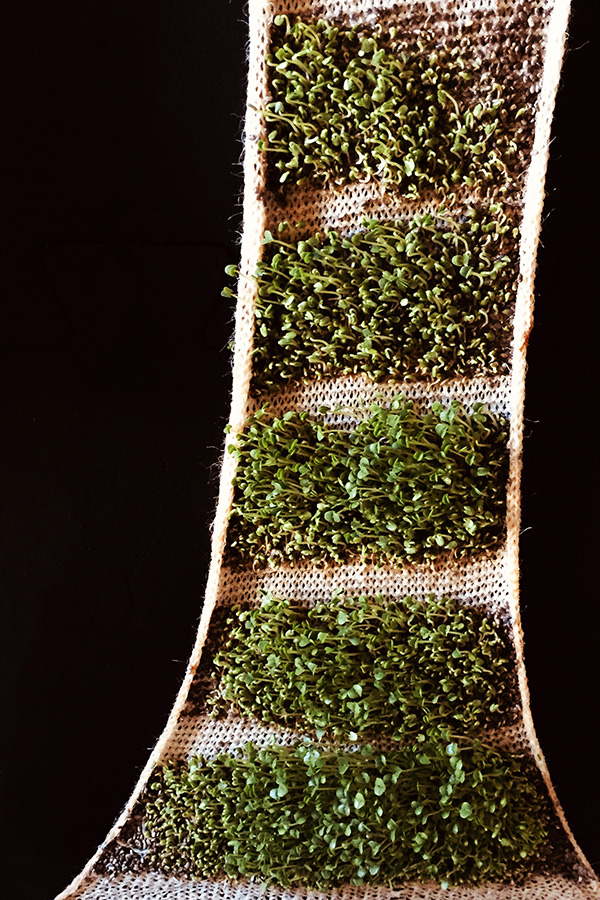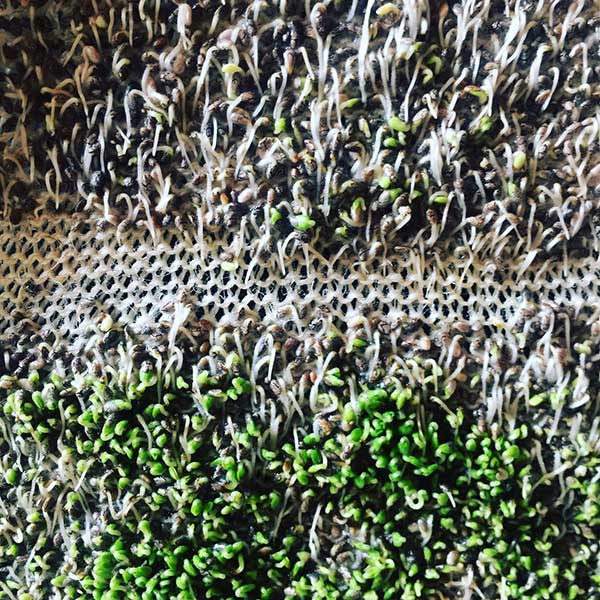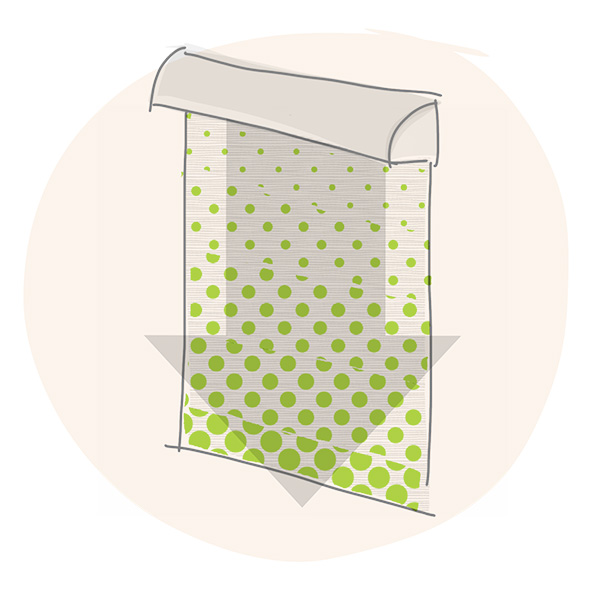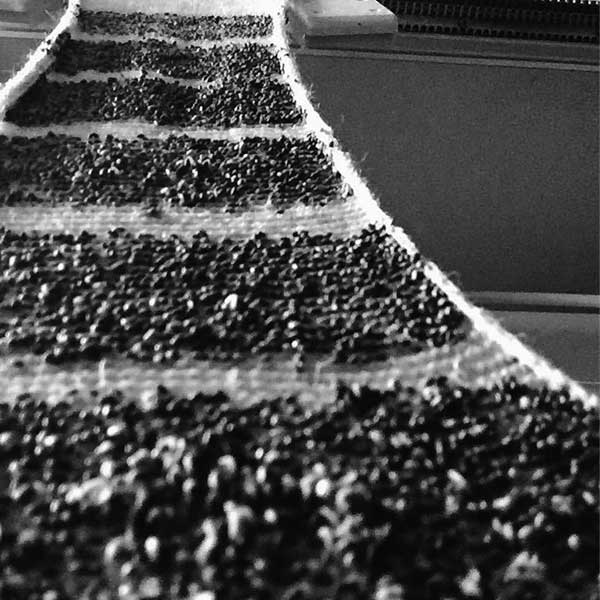Professional Award 2020
WINNER
Alice-Marie Archer
Beyond Earth 2020
£2000

The Textile Society Professional Development Award 2020 has been awarded to Alice-Marie Archer for her project titled Beyond Earth 2020.
This doctoral research project is centred on the development of knitted substrates as an alternative to non-woven textiles in soil-less farming known as hydroponics. Alice-Marie is using knit as a creative vehicle in the construction of architectural installations, exploring how local materials and ecology can challenge form in hi-tech food production. Alice-Marie describes her research as a place where ‘industrial values are supplanted with craft ones’.
Through a process of continuous knitting, seeding and irrigating by machine and hand, Alice-Marie is developing artefacts around the concept of ‘surfaces that grow’ over a period of weeks, both in their knitted length and plant development. She will be working collaboratively in the UK and internationally to develop a prototype knitting machine that will enable her to produce larger-scale installations – initially as part of the School of Architecture at Portsmouth University and subsequently towards a submission to the Venice Biennale. It is Alice-Marie’s intention that the work will contribute to future thinking on ‘living surfaces in urban schemes’, and will develop the concept of buildings that can ‘grow themselves’.
The Textile Society judging panel was impressed by the interdisciplinary nature of this project that spans ecology and knit, craft and architecture, with its potential for international collaboration, installation and exhibition. Alice-Marie Archer’s proposal demonstrated ambition and imagination, and her creative vision for the project is expressed in the following account:
Imagine walking into a space where a large knitting-type machine, mounted high on a wall, is printing a long, wide piece of undyed knitting. The knitting hangs down the wall almost touching the ground. At the machine end…you can see the stitches as they emerge in rows… You see a small robotic arm passing over the knitting, squirting out a gunk of seeds… As you look down the knit you see that these seeds are germinating – first in rows of small flashes of yellow and green, then, as small leaves emerging from the knitting. At the end of the…knitting – near your feet – you see small upright plants reaching for the daylight. You note the pattern of the rows has an uneven staggered look… The installation attendant cuts off a piece of the ground-level knitting and gives it to you to inspect. All the while the machine whirs, and the knitting continues to grow very slowly. [It] is heavier than you had anticipated, and damp. Cool but not cold. You sense a liveliness in it. The plants are small and intensely green. ‘Microgreens have higher levels of nutrients than mature plants’, the attendant explains. ‘You can eat them’, they say. ‘Or you can place this on a plate with a little water and let it grow more at home. When it’s done, pick off the roots and put it in a hot wash – then you can use it as a dishcloth. When that is done – chuck it in the compost bin’, they say.
(Alice-Marie Archer, October 2020)







